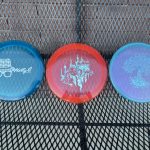Disc golf, a sport that combines the thrill of golf with the accessibility of flying discs, has seen significant growth in recent years. However, despite its popularity, the sport still faces a demographic discrepancy, with participation rates disproportionately low among certain groups. In this article, we’ll explore the reasons behind this discrepancy and provide inclusive strategies to expand participation and make disc golf a more inclusive and welcoming sport for all.
The Current State of Disc Golf Participation
According to the Professional Disc Golf Association (PDGA), the sport’s governing body, the majority of disc golfers are white, male, and between the ages of 25 and 44. This demographic skew is not unique to disc golf, as many outdoor recreational activities tend to attract a similar demographic. However, the lack of diversity in disc golf participation is concerning, as it can limit the sport’s growth and make it less appealing to potential participants from underrepresented groups.
Barriers to Participation
Several barriers contribute to the demographic discrepancy in disc golf participation. These include:
- Lack of awareness: Many people, particularly those from underrepresented groups, may not be aware of disc golf as a recreational activity or may not know where to start.
- Cost: Disc golf equipment, such as discs and bags, can be expensive, making it difficult for people with limited financial resources to participate.
- Cultural and social barriers: Disc golf may be perceived as a predominantly white, male sport, which can create cultural and social barriers for people from underrepresented groups.
li>Limited access: Disc golf courses may not be easily accessible or may not be located in areas with high concentrations of underrepresented groups.
Inclusive Strategies to Expand Participation
To break down the demographic discrepancy in disc golf participation, the following inclusive strategies can be implemented:
Marketing and Outreach
Disc golf organizations and courses can work to increase awareness and attract new participants by:
- Targeting underrepresented groups through social media campaigns and community outreach programs.
- Partnering with local organizations and community centers to reach new audiences.
- Hosting events and tournaments that cater to diverse groups, such as women’s and youth events.
Course Accessibility and Design
Disc golf courses can be designed and maintained to be more accessible and inclusive by:
- Locating courses in areas with high concentrations of underrepresented groups.
- Designing courses with diverse terrain and obstacles to accommodate players of all skill levels.
- Providing amenities such as restrooms, parking, and drinking water to make courses more welcoming.
Equipment and Cost
Disc golf organizations and courses can work to make the sport more affordable and accessible by:
- Offering discounted equipment and membership rates for low-income individuals and families.
- Providing free or low-cost introductory lessons and clinics.
- Partnering with local businesses to offer discounts and promotions.
Cultural and Social Inclusion
Disc golf organizations and courses can work to create a more inclusive and welcoming environment by:
- Hosting events and tournaments that celebrate diversity and promote inclusivity.
- Providing opportunities for players from underrepresented groups to take on leadership roles and participate in decision-making processes.
- Creating a code of conduct that promotes respect and inclusivity among players.
Conclusion
Breaking down the demographic discrepancy in disc golf participation requires a multifaceted approach that addresses the various barriers to participation. By implementing inclusive strategies, disc golf organizations and courses can work to increase awareness, accessibility, and affordability, while promoting a more inclusive and welcoming environment. By doing so, disc golf can become a more diverse and vibrant sport, attracting new participants and growing its popularity.
FAQs
Q: What is the most effective way to increase awareness of disc golf among underrepresented groups?
A: Targeted social media campaigns and community outreach programs are effective ways to increase awareness and attract new participants from underrepresented groups.
Q: How can disc golf courses be designed to be more accessible and inclusive?
A: Courses can be designed with diverse terrain and obstacles, and amenities such as restrooms, parking, and drinking water can be provided to make courses more welcoming.
Q: How can disc golf organizations and courses make the sport more affordable and accessible?
A: Offering discounted equipment and membership rates, providing free or low-cost introductory lessons and clinics, and partnering with local businesses to offer discounts and promotions are effective ways to make the sport more affordable and accessible.
Q: What role can local organizations and community centers play in promoting disc golf among underrepresented groups?
A: Local organizations and community centers can play a crucial role in promoting disc golf by hosting events and tournaments, providing resources and support, and helping to increase awareness and participation among underrepresented groups.








